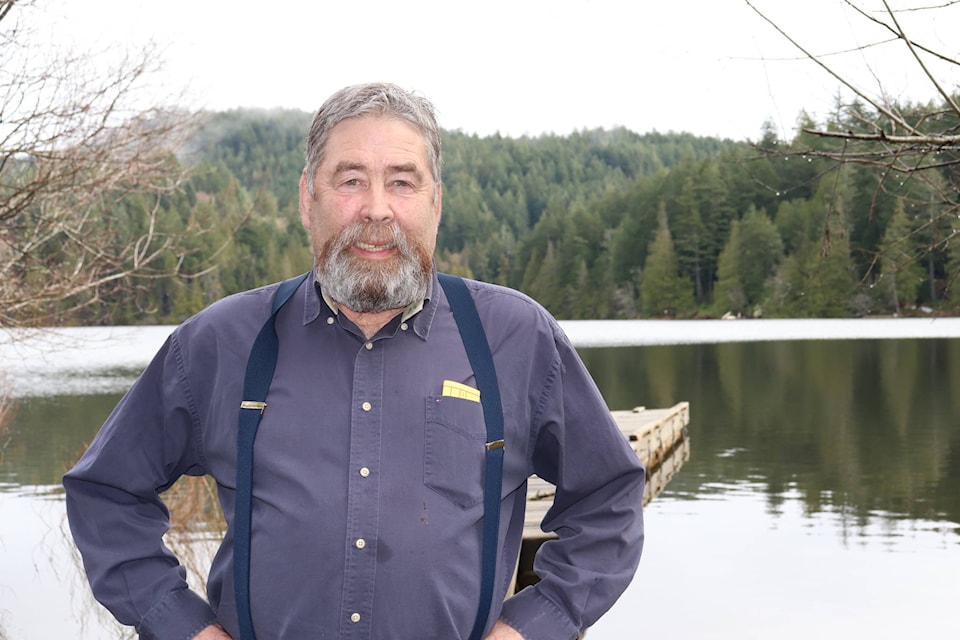First in a three-part series
Water.
It’s a basic requirement of life and for man, it’s a simple matter of turning on the tap to have clean, safe water provided to us.
But in the District of Sooke, the process isn’t straight forward.
But we’ll get to that.
The provision of safe water is certainly the case for most of Sooke and parts of East Sooke, where the Juan de Fuca Water Distribution System draws in water provided by the Capital Regional District from their operation of the Sooke Reservoir.
“The CRD built this beautiful system that’s crazy good,” Mike Hicks, the CRD’s Juan de Fuca Electoral Area director, said.
“[It] protected the watershed and built the trunk lines out to various communities and it is some of the best water in the world.”
The CRD acts as a wholesaler of that water, selling it to a variety of distribution systems. Those systems sell the water to customers.
For Sooke, the retailer of the water is the Juan de Fuca Water Distribution System (which also provides water to Colwood, Metchosin, View Royal, and parts of East Sooke). That system service approximately 58,000 customers, and to provide some perspective, consists of 15 storage reservoirs, 37 pumping stations, 435 kilometres of water mains, 6,158 valves, 1,558 fire hydrants, and more than 18,000 retail water meters.
It’s a huge, well managed system.
But the provision of water for many residents in the District of Sooke is far less secure.
The root of the problem lies in the trunk lines and CRD water distribution was not originally extended to all portions of the region.
After the initial lines were installed, it soon became the policy of the CRD that any extension of the lines to service new areas would have to be passed along exclusively to only those customers benefiting from the extension.
“I agree that on a philosophical level it might make sense to spread that cost across all customers, that’s not something that people in other areas will accept. The decision has been made that any extension has to be paid for by only those customers benefiting,” Ted Robbins, the general manager of the integrated water systems for the CRD, said.
That policy makes it unlikely some properties will ever have piped in water, as it costs about $1,000 a metre to extend a water line and, in many cases, those extensions would be measured in tens of kilometres.
“In the beginning, everyone started with wells, or drawing water from creeks or lakes. For many people in the District of Sooke, that’s still the case. At $1,000 a metre for running a water line to those areas, it’s going to stay that way. Piped water is just never going to happen,” Hicks said.
Eventually, in some areas, groups of residents not serviced by CRD reservoir water found another solution and banded together to form their own water systems.
Under the provincial legislation these eventually became improvement districts. They were (and are) small water systems operated on an individual basis by primarily volunteer run organizations. The province empowered them to carry out the necessary operation of the systems, but Island Health still monitored the water to ensure its safety.
But problems frequently arise with these smaller systems.
The Sheringham Water Works provides water for about 300 residents in Shirley. The organization recently raised concerns its watershed was threatened by a proposed development on land previously owned by Western Forest Products.
RELATED: Sheringham Water faces challenges
The Ministry of Forests refused to intervene and Western representatives gave vague assurances they were aware of the concerns and would work to address them.
There has been no resolution as yet.
In yet another example, the 450 residences serviced by the Kemp Lake Waterworks District decided they needed to solve their water problems by connecting to the CRD water supply. They authorized the borrowing of $2 million to make that connection— a decision that will cost each household an additional $305, amortized over 25 years.
The project was approved after it was discovered the cost of upgrading the existing system would be extremely high as well and when the CRD declined to take on the system as part of its responsibility (until such time as it was brought up to acceptable standards).
With this most recent move to buy CRD water, the Kemp Lake Waterworks District has opted to remain an independent entity.
Some independent water systems have, though, become part of the CRD’s jurisdiction, although they do not have access to the CRD reservoir’s water.
“The CRD acquired some services in the past, typically with substandard disinfection systems that needed to be upgraded. Now, in some cases, the pipes, pumps and valves are failing and we have to go in and repair them,” Robbins said.
The cost of upgrades and repairs are not shared by all the CRD’s customer’s, however.
“The ratepayers in Oak Bay and Saanich don’t want to be paying for upgrades to systems outside their communities. The costs are borne by the ratepayers serviced by that specific system and can get quite expensive for them,” Robbins said.
And it presents a challenge for some of those water systems.
The Wilderness Mountain Water System, near the top of Mount Matheson, recently faced its second boil water advisory in seven months after testing by Island Health showed it to be undrinkable.
RELATED: Boil water advisory rankles residents
“We have filtration in the Wilderness System that’s not doing the job. One of the options to resolve that situation is to have a pipe connection to [Juan de Fuca] but it would be $5 million to 70 customers and they would have to bear that cost. We’ve made some grant applications, but it’s been over a year (since we applied) and we may find that we have to go to a less desirable option that will still cost the ratepayers a lot of money,” Robbins said.
But some residents in the District of Sooke are still relying on water that they access directly from wells or surface sources.
One resident lives on Otter Point Road, beyond the reach of the existing water line. Her family still draws water directly from DeMamiel Creek. The water is not suitable for drinking, and the family is faced with hauling in drinking water regularly.
“There’s not a lot we can do for those people, but I managed to get a key card system for a second bulk water station on Otter Point Road,” said Hicks
With the only other bulk water station located on Sooke River Road, another station was required, he said.
RELATED: Another bulk water station
And while some wells and other water sources are perfectly adequate, some are not.
The Misty Ridge Water Co., on Mount Matheson, has been under a boil water advisory for more than two years. Island Health issued an order after the water was found to not meet prescribed health standards.
But even here, the situation is complicated.
If the owner of the well used the water for himself, VIHA would never get involved, Robbins said.
“Requirements become quite different the moment you service more than one property. At that point, it becomes a community water system and that triggers an [Island Health] operating permit,” Robbins said.
Some of the water systems operated by the CRD but not connected to the reservoir water supply, are operating well.
In Port Renfrew, developers are cooperating with the CRD to improve access to water.
“There was a real need to increase water supply in Port Renfrew. We had some phased developments waiting for a greater supply of water before moving forward. But I think we have that situation solved now,” Hicks said.
RELATED: Debate goes back years in Port Renfrew
Robbins said 10 years ago, developers began to drill new wells and found a good supply of high quality water. The problem was that the gravity feed reservoir did not have sufficient capacity to meet the water needs of a growing community.
“We have a second reservoir going in now and that’s going to be a game-changer,” Hicks said. But the provision of water in the District of Sooke continues to be a patchwork of systems and quality.
“We’re going to have to change our thinking n the future” Hicks said.
Next in the series — life without a secure water supply
tim.collins@sookenewsmirror.com
Like us on Facebook and follow us on Twitter

